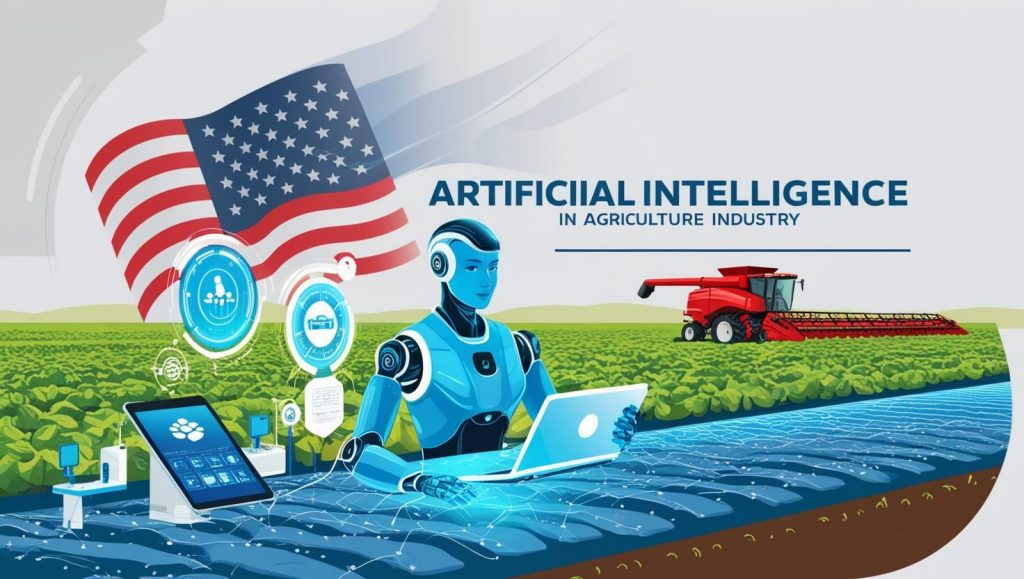The artificial intelligence (AI) in agriculture market has been undergoing rapid transformation in recent years. However, the introduction of tariffs especially those enforced during the Trump administration has created notable disruptions in global supply chains, driving a new wave of innovation, strategic shifts, and market adaptation. While these trade barriers posed challenges, they also reshaped industry priorities and catalyzed growth in unexpected directions.
Below are the top 10 emerging trends in the AI in agriculture market that have been influenced or accelerated by tariff-related disruptions:
- Shift Toward Localized Manufacturing
Tariff-related cost increases on imported components, especially from China, have encouraged agri-tech companies to explore domestic manufacturing alternatives. This reshoring trend has not only created new opportunities for local suppliers but also improved supply chain agility and reduced exposure to future trade uncertainties.
- Increased Investment in Software-Driven AI Solutions
With hardware components becoming more expensive and harder to procure, many companies have shifted their focus to software-based AI applications. These include cloud platforms for crop analytics, predictive yield modeling, and AI-powered farm management tools that require fewer physical components and offer scalability across regions.
Book Your “Trump Tariff Threat Assessment”
https://www.marketsandmarkets.com/pdfdownloadNew.asp?id=159957009
- Expansion of Edge AI in Agricultural Equipment
Edge computing—where data is processed locally on the device rather than relying on centralized servers—has gained momentum as an efficient, low-latency solution. With tariffs limiting access to some high-end chips and network infrastructure, manufacturers have started embedding smarter AI capabilities directly into field devices like tractors, sensors, and irrigation systems.
- Diversification of Supply Chains
To circumvent tariff impacts, agricultural AI vendors are diversifying their supply chains and reducing dependency on any single country or region. This includes sourcing components from Southeast Asia, Europe, and North America, fostering a more resilient global supply network.
- Surge in AI-as-a-Service (AIaaS) for Farming
Subscription-based AI services are becoming more popular, allowing farmers to access powerful data-driven insights without the need for expensive hardware. This model offers affordability, scalability, and minimal exposure to component price volatility caused by tariffs.
- Growing Role of Public-Private Partnerships
Governments and private firms are increasingly collaborating to build resilient agri-tech ecosystems. This includes funding domestic AI innovation, supporting pilot programs in rural areas, and developing tariff-free trade corridors for essential agri-tech products.
- Increased Focus on Open-Source AI Tools
Open-source AI platforms and tools are being widely adopted to reduce costs and foster collaborative innovation. By sharing algorithms, models, and datasets, companies can accelerate development and reduce reliance on expensive proprietary technologies that may be impacted by tariffs.
- Customized AI Solutions for Regional Markets
With global trade becoming less predictable, companies are tailoring their AI offerings to fit the specific needs of local markets. This includes creating regionalized AI models that accommodate different crop types, climates, and agricultural practices while using locally available hardware.
- Accelerated Adoption of Autonomous Farm Equipment
Tariff disruptions have pushed companies to rethink labor and automation strategies. As a result, autonomous machinery like self-driving tractors, drones, and harvesters—powered by AI—are seeing faster adoption, especially in countries where labor shortages are significant.
- Emphasis on Data Sovereignty and Security
As reliance on domestic solutions grows, data privacy and sovereignty have become increasingly important. Agricultural stakeholders are more mindful of where their data is processed and stored, leading to the rise of region-specific cloud and AI infrastructure tailored to local regulatory frameworks.
While tariffs initially posed a setback to the AI in agriculture industry by inflating costs and creating uncertainty, they also served as a catalyst for long-term growth and transformation. From reshaping supply chains to driving the adoption of new business models and technologies, these disruptions have redefined the competitive landscape. As we move forward, agility, localization, and innovation will be key pillars sustaining the AI in agriculture market in a post-tariff world.

